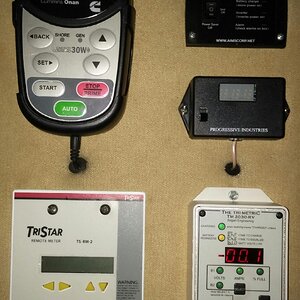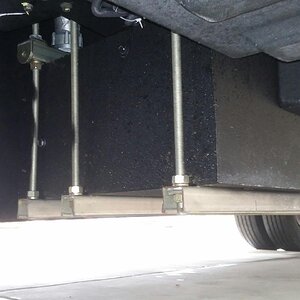Good evening.
I will apologize for the length of this post before I even start writing it. There is simply no short concise way to explain what NIRVC is trying to share with the public.
Sharing our Defects Per Unit (DPU) with the public on our website is really the first of three reports we generate and have tracked internally for many years. In ascending order of importance to me as a fulltimer of 11 years and coach owner of 39 years are:
1. Defects Per Unit (DPUs). [Quality]
2. Warranty Ratings for chassis, motorhome factory warranty, and the biggest of all to me… extended service plans(ESP). [Customer Service]
3. Our historical database (12,000+) of used coaches NIRVC has sold, and what the NADA Book Value was on the day of sale. The spread between the lowest at -20+% below Book to 28% above book has the single largest impact on the cost of ownership. [Value]
DPUs are a glimpse at the relative quality, or quality control, between manufacturers. Our warranty ratings are a glimpse of how good or bad a manufacturer’s warranty or ESP is with their customer service after the sale. And yes, DPUs and factory warranty ratings are inexplicably connected to each other. And, our discounts or premiums to Book in the used market are a glimpse at relative value between manufacturers. Call it what you will, “bang for the buck” or cost of ownership. These premiums or discounts to Book are inextricably tied to how well a manufacturer keeps supply and demand in check. Does a manufacturer habitually overbuild, or do they keep demand high for their products? When a manufacturer “stuffs the channel,” invariably the manufacturer will offer their dealers “factory assistance” in order to move their inventory off the dealer’s lots, and to free up the dealer’s flooring lines in order for the dealer to order more coaches, in order for the manufacturer to keep their lines running. Unfortunately, when a manufacturer offers $50,000 in factory assistance to a dealer they have effectively reduced the value of every one of their coaches on the road by $50,000.
Bottom line, I believe the bright light of transparency in these three areas will allow coach buyers to make a more informed buying decision as it relates to quality, customer service of warranties, and cost of ownership. Armed with this information coach buyers can vote with their wallets and drive changes in behavior.
Now, with that bit of background behind us I will address your questions on DPUs.
1. What units are being counted in our DPUs?
Only new units are being considered in our DPU report. Only the defects we find during our PDI, plus anything discovered during the walkthrough are being counted. Bottom line, all defects from when the unit arrives on our lot up to, and including delivery, are being counted. No defects after delivery are being counted as they will show up in our warranty ratings report. All manufacturers should be able to reconcile our DPUs right back to the warranty claims they have paid.
FWIW, we use the same PDI checklist across all our locations for the chassis, house, and paint. And, all units are inspected by the same people in each location.
Yes, we do find defects for which a manufacturer will not authorize repair. Those un-repaired defects are not being counted in our DPU report, but are being counted in our warranty ratings report. All defects are ultimately accounted for, and there is “no free lunch” for manufacturers on defects.
2. How are minor, medium, and major defects being defined?
Any single repair taking 0.5 hours or less to repair is considered a minor defect. Any single repair between 0.51 and 1.99 hours to repair is being considered a medium defect. And, any single defect requiring over 2.0 hours to repair is being counted as a major defect, and a defect we believe should have been caught by the factory before shipping the unit to us. FWIW, and by coincidence, our breakdown between minor, medium, and major defects resembles the typical bell curve with 20% of the defects being minor defects, 70% being medium defects, and 10% being major defects.
3. How many units are being counted, and why aren’t we disclosing the unit counts?
First, there is a limit to how much I’m willing to disclose to my competition. Second, the DPUs are a running average by quarter per manufacturer, so we didn’t see the relevance. Having said that, we felt it only fair to have a minimum sample size each quarter, and that minimum is 5 units, or 20 units per year, per class, per manufacturer. For clarity, our DPUs are not weighted. We didn’t want to “put our thumb on the scales,” because we wanted our manufacturers to be able to reconcile our defects to their warranty claims.
4. Are the “Hours to Cure” true clocked hours of labor?
The “Hours to Cure” are the actual hours the manufacturer paid to repair the defect. Again, the manufacturer can reconcile our reporting back to their warranty claims paid. Any hours not authorized, or denied, will show up in our warranty ratings.
5. What time period is being reported for Tiffin?
NIRVC signed its dealer agreement with Tiffin in June of 2023, however we didn’t receive any units until November of 2023. We had not received our minimum 5 units from Tiffin by December 31, 2023, so our Tiffin reporting began the first quarter of 2024 when we had received a great number of Tiffins. There was a point during the spring we had more Tiffins on our lot than any other brand we represent, but that was merely due to the fact that no one knew we were a Tiffin dealer yet. Thankfully, that has now remedied itself, but my point here is, we have PDI’d one whale of a lot of Tiffins since becoming a Tiffin dealer.
6. How often will we update the DPUs on our website?
While we PDI units every day and track their defects in realtime on our internal dashboards, we will only push the data to our website on a quarterly basis. Each quarterly update is calculated with trailing twelve months of defects.
Lastly, I would be remiss if I didn’t give credit where credit is due. After we received our first Tiffin units last November, performed our PDIs, and filed our first warranty claims, I received a call from Leigh Tiffin. Leigh wanted to know if I would be willing to send one of our PDI teams to Red Bay to randomly perform a PDI on any unit of our choosing in front of his production team. I had never received such a request before, and we have been sharing our DPU reports with manufacturers since June of 2020. Naturally, I jumped at the opportunity and sent our PDI team out of Nashville to Red Bay. They were there inspecting and answering questions from Leigh’s team for a full day. From my vantage point Leigh takes defects very seriously, and it has certainly proven to be the case in the numbers we collect and track.
This post is plenty long already, so I’ll sign off here. For those who have managed to stay awake all the way to the end… thank you!
Onward,
Brett
I thought this might help some to understand what he is trying to do.
Bill












